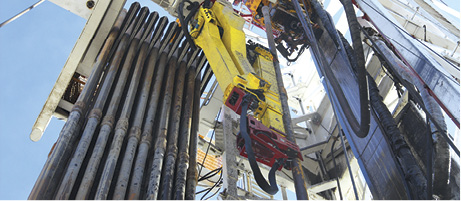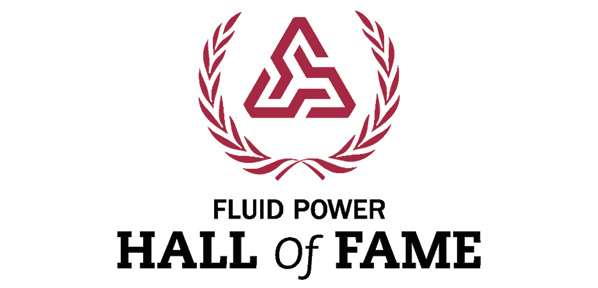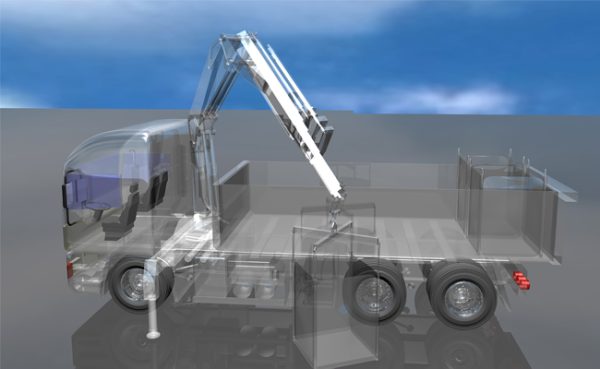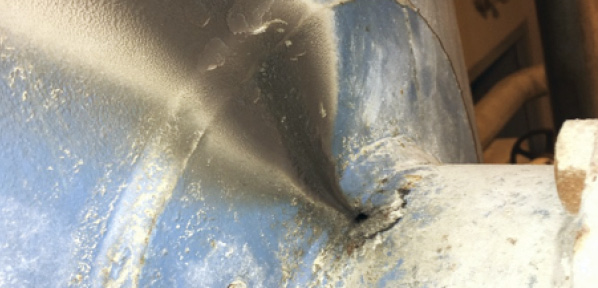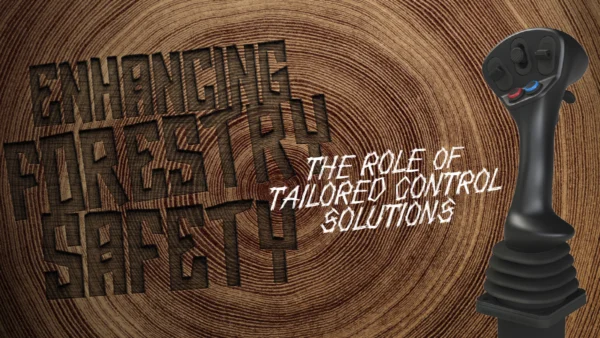Changing the Way You Cut Chain
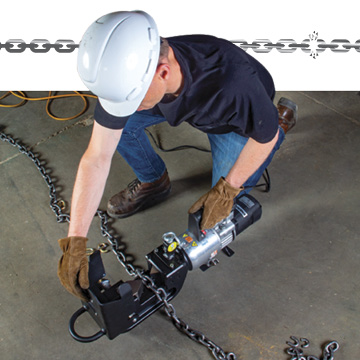 The new series of Enerpac chain cutters promises to improve safety and productivity
The new series of Enerpac chain cutters promises to improve safety and productivity
By Tim Kellagher, Product Marketing Manager, Enerpac
There’s a reason why chain is used almost everywhere. Its durability, high breaking force, and capacity to carry a load makes it the preferred option in a wide variety of applications. Where chain really shines is within the crane and hoist market—you’ll see it used in material handling, chain blocks and chain hoists.
For overhead lifts, chains must be specified as grade 80 or higher, which ensures that it is made of well-manufactured metal and is highly durable. Chains must also be regularly inspected to ensure there are no deformities. If a chain link is damaged, it will not be able to handle the rated load, and using the chain could be dangerous.
Whether cutting chain to size for your specific application or removing damaged links, there are a variety of ways to cut chain today, but many come with downsides.
Cutoff Grinders
A cutoff grinder is a versatile tool that is found in many shops and jobsites, but it’s not a tool specifically designed to cut chain. Have you ever seen images of rotating blade pieces stuck in safety glasses? That’s one way to illustrate the danger of using a grinder to cut chain. If your cutoff wheel gets pinched in the material, has any deformation or is improperly sized for your grinder, you risk the cutoff wheel exploding. A grinder spinning at thousands of RPMs has incredible force and momentum. If the blade breaks, those metal pieces will go flying, and if a protective guard is not being used, the operator may be injured.
When using a grinder, there are also risks associated with shooting sparks. These small pieces of burning metal can injure an operator who isn’t wearing protective safety gear. Sparks could also potentially start a fire. To avoid injury to other workers from sparks, you need to keep about a 10-foot perimeter around the work area.
The metal dust that grinders create requires an operator to wear a respirator while cutting.
Finally, when using a grinder, there’s also the risk of hitting an adjacent link and causing damage. It takes a good amount of focus to keep a vibrating grinder steady during the time it takes to cut a chain. While cutting a single chain with a grinder might not seem a big deal, if you do it several times a day, fatigue can quickly set in. If the grinder touches an adjacent link, it would be compromised. A mistake like that wastes time and valuable raw materials.
Torches
A torch is another tool found in many shops and on jobsites. Torches have great versatility when it comes to cutting. A torch can cut through thick sheet metal, wire rope, or strong chain. And while a torch will get the job done slightly faster than a grinder, it also has its downsides.
First, a torch is essentially a concentrated open flame. The intense heat is not only thrown forward, it also bounces off the chain and comes back at the operator. This is known as heat kick back, and it can cause operator fatigue. Imagine it’s a 100-degree day with 100% humidity in an unairconditioned shop in Houston, and your job is to prepare 50 chains for a customer order using a torch. Not only will you easily be drenched in sweat, fatigue will soon set in. When it does, you risk damaging an adjacent link.
Like grinders, another downside to torches are shooting sparks, which can cause injury to nearby workers. The operator needs to wear a protective facemask, flame-retardant clothing, and heat-resistant gloves to handle the chain, which becomes extremely hot from the intense heat of the torch.
Manual chain cutters
A manual chain cutter works by pulling down on a lever to either mechanically cut a chain or manually pump a hydraulic system to cut it. While it is an inexpensive option, there are downsides. First, it relies on the force of a single person to cut the chain. Second, it can’t cut large pieces of chain. Most manual chain cutters can’t handle chain thicker than 3/8 inch. When you need to cut a chain that is a half-inch thick or greater, a manual chain cutter is not an option.
The new Enerpac cutter series
Enerpac recently launched a series of industrial cutters, including a chain cutter that improves safety and productivity. The Enerpac chain cutter quickly cuts through heavy-duty chain links—and it works by having an operator pull a trigger. It uses a cylinder driven by a radial pump powered by an electric motor. A highly durable blade attached to the front of the tool works against another angled blade to cut the chain with hydraulic force. A chain as thick as 1¼ inches can be cut in less than 40 seconds.
The Enerpac chain cutter cuts links behind an enclosed, transparent safety guard, protecting the operator’s hand from potential injury while allowing the operator to monitor the cutting process. With no sparks or open flames to worry about, the operator is safe not wearing fire-retardant clothing—all that’s needed are regular safety gloves and glasses. Not having to put on flame-retardant clothing, a protective facemask, or special heat-resistant gloves saves the operator valuable time. After the chain is cut, it will be cool enough to handle, so the operator can move on to the next task.
Adjacent chain links are protected from damage when using the Enerpac chain cutter. The angled blade automatically pushes the other links out of the way, enabling operators to precisely cut a single link—no matter its size—without compromising adjacent ones.
Another benefit is that the tool saves the operator from fatigue. Cutters produce minimal vibration, helping prevent a condition known as hand-arm vibration syndrome. Less fatigue can help improve operator productivity. And cleanup is easy, which saves even more time. This electrically powered tool plugs into 120V or 230V outlets and is easily transported wherever an external power source is available.
Enerpac hopes its chain cutter will change the way workers cut chain. It promises a new level of speed and safety to an otherwise difficult task.
The new line of Enerpac industrial cutters includes five families of tools designed to cut metal bar, industrial chain, wire rope and cables, metal tubes, profiles and similar materials. The cutters are built to handle industrial-grade materials on a daily basis.
For more information, visit www.enerpac.com/cutters.


